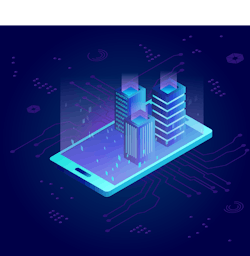Amazon Web Services, Inc. (AWS) has announced the general availability its AWS IoT TwinMaker offering, a new service that makes it faster and easier for developers to create digital twins of real-world systems such buildings, factories, industrial equipment, and production lines.
Today at the AWS Summit San Francisco (April 20 - 21), the company further announced that Siemens, Carrier, and INVISTA are among among the AWS customers and partners currently using AWS IoT TwinMaker,
As reckoned by an AWS statement:
Digital twins are virtual representations of physical systems that use real-world data to mimic the structure, state, and behavior of the objects they represent and are updated with new data as conditions change. AWS IoT TwinMaker makes it easy for developers to integrate data from multiple sources like equipment sensors, video cameras, and business applications—and combines that data to create a knowledge graph that models the real-world environment.
The company notes that with AWS IoT TwinMaker, many more customers can use digital twins to build applications that mirror real-world systems that improve operational efficiency and reduce downtime. The company adds that there are no upfront commitments or fees to use AWS IoT TwinMaker, and customers only pay for accessing the data used to build and operate digital twins.
Michael MacKenzie, General Manager, IoT at AWS, commented:
“Sensors for equipment, buildings, and industrial processes are proliferating and generating massive amounts of data. Customers are increasingly eager to use that data to optimize their operations and processes and one way to do that is using digital twins, but they find that building a digital twin and custom applications is difficult, time consuming, and prohibitively expensive to maintain today. With AWS IoT TwinMaker, customers can now derive previously unavailable insights about their operations that inform real-time improvements to their buildings, factories, industrial equipment, and production lines, and make accurate predictions about system behavior with minimal effort.”
As further noted by AWS, "building and managing digital twins is hard even for the most technically advanced organizations. To build digital twins, customers must manually connect different types of data from diverse sources (e.g., time-series sensor data from equipment, video feeds from cameras, maintenance records from business applications, etc.). Then customers have to create a knowledge graph that provides common access to all the connected data and maps the relationships between the data sources to the physical environment."
The company adds, "To complete the digital twin, customers have to build a 3D virtual representation of their physical systems (e.g., buildings, factories, equipment, production lines, etc.) and overlay the real-world data on to the 3D visualization—and then ensure the digital twin is kept up to date as conditions change. Once they have a virtual representation of their real-world systems with real-time data, customers can build applications for plant operators and maintenance engineers who can leverage machine learning and analytics to extract business insights about the real-time operational performance of their physical systems. Because the work required is complex, the vast majority of organizations are unable to use digital twins to improve their operations."
Technical notes
The company contends that AWS IoT TwinMaker makes it significantly faster and easier to create digital twins of real-world systems. Using AWS IoT TwinMaker, developers can get started quickly building digital twins of devices, equipment, and processes by connecting AWS IoT TwinMaker to data sources like equipment sensors, video feeds, and business applications.
Specifically, AWS IoT TwinMaker contains built-in connectors for Amazon Simple Storage Service (Amazon S3), AWS IoT SiteWise, and Amazon Kinesis Video Streams (or customers can add their own connectors for data sources like Amazon Timestream, Snowflake, and Siemens MindSphere) to make it easy to gather data from a variety of sources. AWS IoT TwinMaker automatically creates a knowledge graph that combines and understands the relationships of the connected data sources, so it can update the digital twin with real-time information from the system being modeled.
Further, customers can import existing 3D models (e.g., CAD and BIM files, point cloud scans, etc.), directly into AWS IoT TwinMaker to easily create 3D visualizations of the physical system and overlay the data from the knowledge graph on to the 3D visualizations to create the digital twin. Once the digital twin has been created, developers can use an AWS IoT TwinMaker plugin for Amazon Managed Grafana to create a web-based application that displays the digital twin on the devices plant operators and maintenance engineers use to monitor and inspect facilities and industrial systems.

